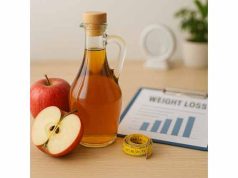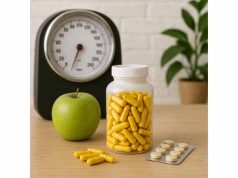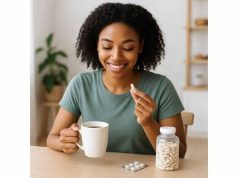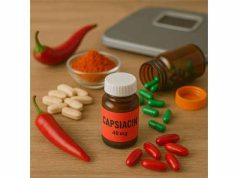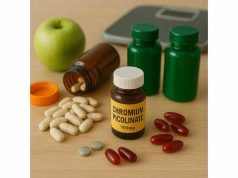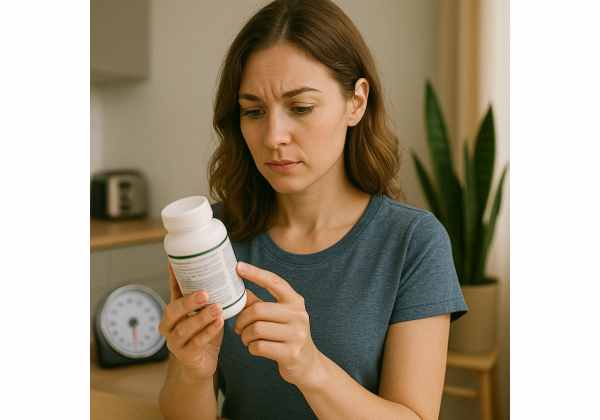
Cutting through supplement claims is hard—even for clinicians. Labels are dense, doses are slippery, and “proprietary blends” hide the numbers you actually need. The good news: once you know what to look for, you can judge most weight-loss supplements in under two minutes. This guide shows you how to decode serving sizes, translate extract percentages into real doses, flag risky stacks, and compare brands fairly. You will also see when a product is unlikely to help and what to use instead. If you are deciding between supplements and prescriptions, start with our plain-English overview of evidence-based options for weight management so you can place any product in the right context.
Table of Contents
- How to read supplement labels
- Dose math and standardization
- Forms, bioavailability and timing
- Stimulants and stacks: red flags
- Third-party testing and quality
- Safety warnings and interactions
- How to compare brands and decide
- Frequently Asked Questions
How to read supplement labels
When you pick up a bottle, you are holding two things: a marketing story and a data panel. Ignore the front. Turn to the Supplement Facts box. Read it in this order:
- Serving size and servings per container
This line tells you how many capsules, scoops, or tablets equal one serving and how many servings are in the bottle. A common trick: three capsules per serving, 20 servings per bottle. If you assume “one capsule per day,” you will underdose and run out early. - Active ingredients with amounts per serving
This is the backbone. For each ingredient, look for milligrams (mg) or micrograms (mcg) per serving. If you see a plant extract percentage (“standardized to 50% catechins”), you will convert that in Section 2. If you see a proprietary blend with a total weight but no amounts for the parts, treat that as a black box—skip to the red flags in Section 4. - Other ingredients
Capsule materials (cellulose, gelatin), flavors, and stabilizers are fine. What you do not want in a weight-loss product: “hidden” stimulants, sketchy botanicals stacked together, or a long list that looks like kitchen-sink marketing. - Directions and timing
“Take three capsules 30 minutes before meals.” Reasonable. “Take on an empty stomach three times daily” raises GI and safety risks and is often unnecessary. If directions suggest escalating to very high doses, pause. - Cautions and contraindications
Legitimate products include real cautions: interactions with diabetes drugs, not for pregnancy, stop if you experience jaundice, and so on. A label with zero cautions for a stimulant blend is either naïve or evasive. - Seals and verification
Look for explicit third-party testing (details in Section 5). A brand name alone is not verification.
A 90-second triage routine
- If serving size is three or more capsules and the bottle contains fewer than 30 servings, cost per month will be high.
- If an ingredient you care about is inside a proprietary blend, you cannot verify dose—assume underdosed.
- If the label lists extract percentages but not the milligrams of the active compounds per serving, you cannot compare products fairly.
- If directions push empty-stomach dosing for stimulant stacks, move on.
Why this matters for weight loss
Doses drive outcomes. A caffeine-containing product under 100 mg caffeine may not change appetite or training. A green tea extract that lists “500 mg extract” without catechin percentage tells you nothing. Fiber capsules that deliver only 1 g per serving will not affect fullness for most people.
If you are rebuilding the foundations while evaluating supplements, skim our guide to a structured plan at safe weight loss basics. The best label in the world cannot overcome chaotic meals, liquid calories, and poor sleep.
Dose math and standardization
Label math is where most people get tricked. Here is how to convert impressive-sounding numbers into the real dose you are swallowing.
1) Extract percentages → active milligrams
If a label reads “Green tea extract 500 mg (50% EGCG),” you are getting ~250 mg EGCG per serving. If a label reads “Garcinia cambogia extract 1,000 mg (60% HCA),” that equals 600 mg HCA. The active drives the effect—not the extract weight.
2) Elemental minerals vs. compound weight
Minerals are often listed by compound weight (e.g., magnesium citrate) but what matters is elemental magnesium. A product that hides elemental amounts will create confusion and invite overdosing or underdosing.
3) Salt forms change dose math
Compounds like L-carnitine appear as tartrate, fumarate, or L-carnitine itself. If you take 1,000 mg L-carnitine tartrate, you are not getting 1,000 mg L-carnitine. Labels that disclose “delivers X mg L-carnitine” are far more honest and easier to compare. For practical context on how form and dose affect outcomes, see our guide to L-carnitine dosing and effects.
4) “Herb equivalent” is not the same as extract dose
“Equivalent to 2,000 mg leaf powder” means nothing unless the extract ratio and standardization are disclosed. An extract labeled “10:1” can be potent—or not—depending on how it is made and whether the active molecules are listed.
5) IU vs. mg vs. mcg
Some fat-soluble compounds still show IU on labels. For weight-loss agents, you will mostly see mg or mcg. Confuse mg and mcg (1,000 mcg = 1 mg) and you can overshoot by 1,000-fold. Slow down and check units.
6) Time-release claims
“Extended release” sounds helpful but can mask under-dosing if the total actives are low. It can also complicate interactions with medications that rely on timing (see Section 6). Do not pay a premium for time-release unless the total actives meet evidence-based targets.
7) Daily dose vs. per-serving dose
Some labels list actives per capsule, others per serving (two or three capsules). Always check serving size. If a study used 400 mg EGCG/day and your bottle delivers 200 mg per serving of two capsules, you will need four capsules per day to match.
Practical examples
- Caffeine: If a capsule lists 100 mg caffeine and you already drink two coffees (~200–300 mg), adding the capsule may push you into sleep-disrupting territory. For dose timing and safe ranges, see our guide to caffeine for weight management.
- Green tea extract: “Green tea extract 500 mg, 95% polyphenols, 50% EGCG” → ~250 mg EGCG. If your target is 300–400 mg EGCG/day with food, you need two servings—and you must verify decaf vs. caffeine-containing.
A quick decision rule
If you cannot calculate the active milligrams per day in 30 seconds, the label is not transparent. Choose another product.
Forms, bioavailability and timing
Not all forms behave the same in your body. Some are absorbed better; others are gentler on the stomach. Here is how to judge form, timing, and fit.
1) Common forms you will see
- Botanical extracts: Look for standardization to a compound that plausibly drives the effect (e.g., “60% HCA” in garcinia, “50% EGCG” in green tea). Vague “leaf extract” suggests weak or variable potency.
- Mineral salts: Citrate, glycinate, bisglycinate, oxide. For hunger or energy, magnesium glycinate/citrate are gentler than oxide.
- Amino derivatives: L-carnitine tartrate vs. acetyl-L-carnitine—different tissue targeting and tolerability.
2) Bioavailability claims—what to believe
“10× absorption,” “liposomal,” or “nanoparticle” delivery can be meaningful if the company shows data. Without numbers, treat as marketing. A transparent dose of the active is more reliable than a flashy delivery system.
3) Timing with meals
- With food: Most weight-loss extracts (green tea catechins, garcinia, capsaicin) are better tolerated with or shortly before meals. Food reduces GI irritation and steadies absorption.
- Empty stomach: Labels that insist on fasting dosing multiple times per day are often trading small theoretical gains for greater side-effect risk.
- Pre-workout: Caffeine or capsinoids can be timed before training if they do not disrupt sleep.
4) Decaf vs. stimulant-containing
If you are sensitive to stimulants or your sleep is fragile, choose decaf versions of green tea extract and avoid extra caffeine. If you train in the morning and tolerate caffeine, a single early dose may help, but set a firm afternoon cutoff.
5) Fiber forms and water
Soluble fibers (e.g., psyllium) taken 15–30 minutes before the hungriest meal improve fullness more predictably than most botanical capsules. If you want a supplement that reliably affects appetite with minimal systemic effects, see our practical comparison in fiber options for weight loss.
6) “Take with plenty of water”
Do it. Many GI complaints come from swallowing powders or capsules with sips, not glasses. For fiber and thermogenic blends, 8–12 ounces of water is a useful default.
7) Storage and stability
Heat and humidity degrade potency. Keep bottles closed, away from stovetops and showers. If softgels smell rancid or capsules clump, replace them.
Bottom line
Choose forms with disclosed actives, dose with meals unless directed otherwise, time stimulants early, and make water your friend.
Stimulants and stacks: red flags
Many “fat burner” formulas are built around stimulants. They can feel effective—until sleep degrades, anxiety climbs, and appetite rebounds. Here is how to spot trouble.
1) Proprietary blends that hide caffeine totals
If a label lists “energy complex 650 mg” with guarana, green tea, yerba mate, and coffee bean, you have no idea how much total caffeine you are taking. Double-dosing with coffee can push you into palpitations and poor sleep.
2) Synephrine, yohimbine, and multiple stimulants together
Stacking stimulants can raise heart rate and blood pressure and increase anxiety. Yohimbine also interacts with common medications and is better avoided by anyone with panic or blood-pressure issues. For a full risk rundown, see our guide to yohimbine safety and who should avoid it.
3) “Carb blockers” plus stimulants
Combining carb blockers, bitter orange, and strong caffeine is a common but unnecessary stack that raises GI and cardiac side-effect risk without delivering reliable, sustained loss.
4) Seven-day “detox” claims
Short-term diuretic or laxative blends create fast scale drops that are not fat loss and often backfire with rebound appetite and dehydration.
5) Dosing late in the day
Any stimulant after early afternoon can impair sleep. Poor sleep increases next-day hunger and blunts fat loss. Protect sleep first.
6) “Clinically dosed” without numbers
If the label does not show the actual actives per serving, “clinically dosed” is a slogan. Demand numbers, not adjectives.
7) Social signals
Be skeptical of products promoted only via influencers, before-and-after photos, and aggressive discount countdowns. Data-driven brands lead with facts on the back panel, not flash on the front.
Safer playbook if you want a noticeable effect
- Time caffeine early and align with training.
- Use single-ingredient products so you can see what actually helps.
- Build an evening routine that protects sleep—your most powerful appetite regulator.
- If you are curious about stimulant stacks, read our overview of fat-burner risks and marketing traps before you proceed.
Third-party testing and quality
Quality does not guarantee results, but poor quality guarantees problems. Verification protects you from contamination, underdosing, and outright fraud.
What third-party testing is
An independent lab verifies that a product contains what it claims (identity and potency) and is free of specific contaminants (heavy metals, microbes, sometimes pharmaceuticals). Common programs include USP, NSF, and Informed Choice.
What to look for on the label or website
- A recognizable certification mark (e.g., USP Verified, NSF Certified, Informed Choice).
- Batch-specific certificates of analysis (COAs) showing the tests run and the results.
- Clear contact information and lot numbers for traceability.
Red flags
- “Lab tested” without a lab name, scope, or batch certificate.
- Exotic blends with zero documentation.
- Brands that change formulas frequently without updating labels or websites.
Why this matters more in weight-loss products
Thermogenic and appetite formulas are high-risk categories for adulteration with pharmaceuticals (e.g., stimulant analogs). Independent testing reduces that risk. If a brand cannot show verification, pick a different product. For a deeper look at seals and what they actually mean, visit our explainer on third-party testing programs.
Shelf life and storage
- Check expiration dates and avoid “short-dated” clearance deals unless you will finish the bottle in time.
- Keep caps closed and store in a cool, dry place.
- Do not decant into unsealed pill sorters for months at a time; exposure to air and humidity degrades some actives.
Bottom line
Verification is not a luxury—it is basic safety. Choose brands that welcome scrutiny.
Safety warnings and interactions
Weight-loss supplements live in the gray zone between food and drugs. Treat them with the same respect you would give any active compound.
Who should avoid common categories
- Pregnant or breastfeeding individuals: Avoid weight-loss supplements; safety data are limited.
- People with liver disease: Be cautious with concentrated botanical extracts (e.g., green tea extract at high doses). Stop and seek care for dark urine, itching, abdominal pain, or yellowing eyes/skin.
- Those with anxiety, panic, or arrhythmias: Avoid stimulant stacks and yohimbine.
- Teens: Focus on nutrition, growth, and clinician-guided care.
Medication interactions to consider
- Diabetes medications: Appetite changes and delayed gastric emptying can affect glucose control; monitor closely and involve your clinician.
- Thyroid replacement: Separate supplements that could alter absorption; ask about timing.
- Blood pressure or psychiatric medications: Stimulants may worsen side effects or interact.
- Anticoagulants: Some herbs and vitamin-K-containing products can interfere; keep your care team in the loop.
How to trial a product safely
- One change at a time: Introduce a single product so you can attribute effects accurately.
- Start low, take with food: Most GI side effects drop when you pair doses with meals.
- Track what matters: Hunger ratings, snack frequency, sleep quality, training performance, and weekly weight trends—not day-to-day scale noise.
- Set stop rules: If no meaningful benefit appears after two weeks at a fair dose—or side effects outweigh benefits—stop.
- Have a fallback: Appetite control from soluble fiber and structured meals is more reliable than most botanicals.
Examples that demand extra caution
- Green tea extract at high doses on an empty stomach: increased liver risk. If you use it, take with food and keep to modest EGCG totals (see our guide to EGCG dosing and risks).
- Berberine: Strong metabolic effects and interacts with multiple drugs; read our overview of results, safety, and interactions before considering it.
The clinician conversation to have
Bring the label, your current medications, and any relevant lab results. Ask three questions: “Is this safe for me?”, “What dose makes sense?”, and “How will we monitor and when would we stop?” A ten-minute conversation can save months of frustration.
How to compare brands and decide
Once you know the basics, choosing a product is straightforward. Use this scorecard and pick the clear winner—or decide to skip supplements entirely and invest in higher-ROI steps.
1) The label clarity test (pass/fail)
- Pass: Serving size clear; actives listed as milligrams of the key compounds; extract percentages disclosed; caffeine content precise (or zero for decaf); no proprietary blends.
- Fail: Proprietary blends; extract weights without actives; vague stimulant listings (“energy matrix”); heroic claims with no numbers.
2) The dose match
- Compare the per-day actives to ranges that are plausibly effective (e.g., EGCG 300–400 mg/day with food; caffeine 100–200 mg early for training if tolerated; psyllium 3–5 g before the hungriest meal). If the label cannot reach these with reasonable serving sizes, it is not a fit.
3) The quality check
- Third-party seal or COA? Lot number? Clean “other ingredients”? If a brand hides testing, pick a competitor that does not.
4) The lifestyle fit
- Can you take it consistently (e.g., before lunch and dinner)? Does it align with training times and sleep? If not, skip. A perfect product you forget to use is worse than no product.
5) The budget reality
- Calculate cost per month at the effective dose, not per bottle. A \$20 bottle that lasts ten days at a real dose costs \$60/month—often more than a higher-quality product with honest labeling.
6) The alternative path
- If label clarity is poor or you respond poorly to stimulants, consider non-stimulant levers with higher reliability: soluble fiber before meals, protein anchors (25–35 g per main meal), resistance training two to four days per week, 7–9 hours of sleep, and planned alcohol limits. These beat most capsules over months.
Sample decision in practice
You are considering a green tea extract and a “fat burner.”
- Green tea extract: 500 mg extract standardized to 50% EGCG (→ 250 mg EGCG), decaf, third-party tested, directions “with meals” → Candidate. You would take two servings daily with food to hit 500 mg EGCG, assess for two weeks, and stop if no appetite change.
- Fat burner: “Thermo blend 650 mg” listing multiple caffeine sources without totals, plus yohimbine and synephrine, “empty stomach 3× daily,” no testing → Not a candidate.
Write your exit plan on day one
Decide what success looks like (e.g., fewer impulse snacks, steadier 3 p.m. energy, one pound average loss per two to three weeks). If the product does not help you hit that pattern without hurting sleep, stop and redirect your budget.
Frequently Asked Questions
What is the biggest label trick on weight-loss supplements?
“Proprietary blends” hide the amounts of individual ingredients. If caffeine and other actives are buried inside a blend, you cannot judge safety or effectiveness. Choose products that disclose exact milligrams of each active and skip blends that obscure dose.
How do I convert extract percentages into real doses?
Multiply the extract weight by the percentage of the key active. Example: 500 mg green tea extract at 50% EGCG equals 250 mg EGCG. If your daily target is 300–400 mg EGCG with food, you will need more than one serving.
Are stimulant-free products safer?
Often, yes—especially for sleep and blood pressure. Decaf green tea extracts and soluble fibers have lower side-effect risk than stimulant stacks. Still, take them with food, watch for GI symptoms, and verify third-party testing to avoid contamination or underdosing.
Which seals should I look for on the label?
Prefer USP Verified, NSF Certified, or Informed Choice. These programs test identity, potency, and contaminants. A generic “lab tested” claim without a lab name or batch certificate is not meaningful. Brands should publish or provide COAs on request.
How long should I try a supplement before deciding?
Two weeks at a tolerable, evidence-based dose is enough to judge appetite and snack changes. Track hunger, snacks, and sleep. If there is no benefit—or sleep worsens—stop. Do not escalate doses to “force” an effect.
Can supplements replace a structured plan?
No. At best, they make a good plan easier to follow. Build a modest calorie deficit, anchor meals with protein, add soluble fiber before your hungriest meal, lift two to four days weekly, and protect sleep. Then decide whether a supplement is worth testing.
References
- Dietary Supplements for Weight Loss – Health Professional Fact Sheet 2022 (Government Fact Sheet)
- Summary of Health Canada’s Safety Assessment of Green Tea Extract for Use as a Supplemental Ingredient – Canada.ca 2023 (Government Safety Assessment)
- The effect of caffeine on subsequent sleep: A systematic review and meta-analysis 2023 (Systematic Review & Meta-analysis)
- Can dietary viscous fiber affect body weight independently of an energy-restrictive diet? A systematic review and meta-analysis of randomized controlled trials 2020 (Systematic Review & Meta-analysis)
- Health Science Certification Program Basics | NSF 2023 (Certification Program Overview)
Disclaimer
This article provides general information and is not a substitute for personalized medical advice, diagnosis, or treatment. Always consult a qualified healthcare professional before starting, stopping, or combining supplements—especially if you take prescription medications, are pregnant or breastfeeding, or have chronic health conditions.
Share and follow
If this guide helped you decode supplement labels and spot red flags, please share it with someone comparing products. For steady, evidence-based updates on practical weight-management tools, follow us on the social platform you use most—Facebook, X, or another network you prefer.

